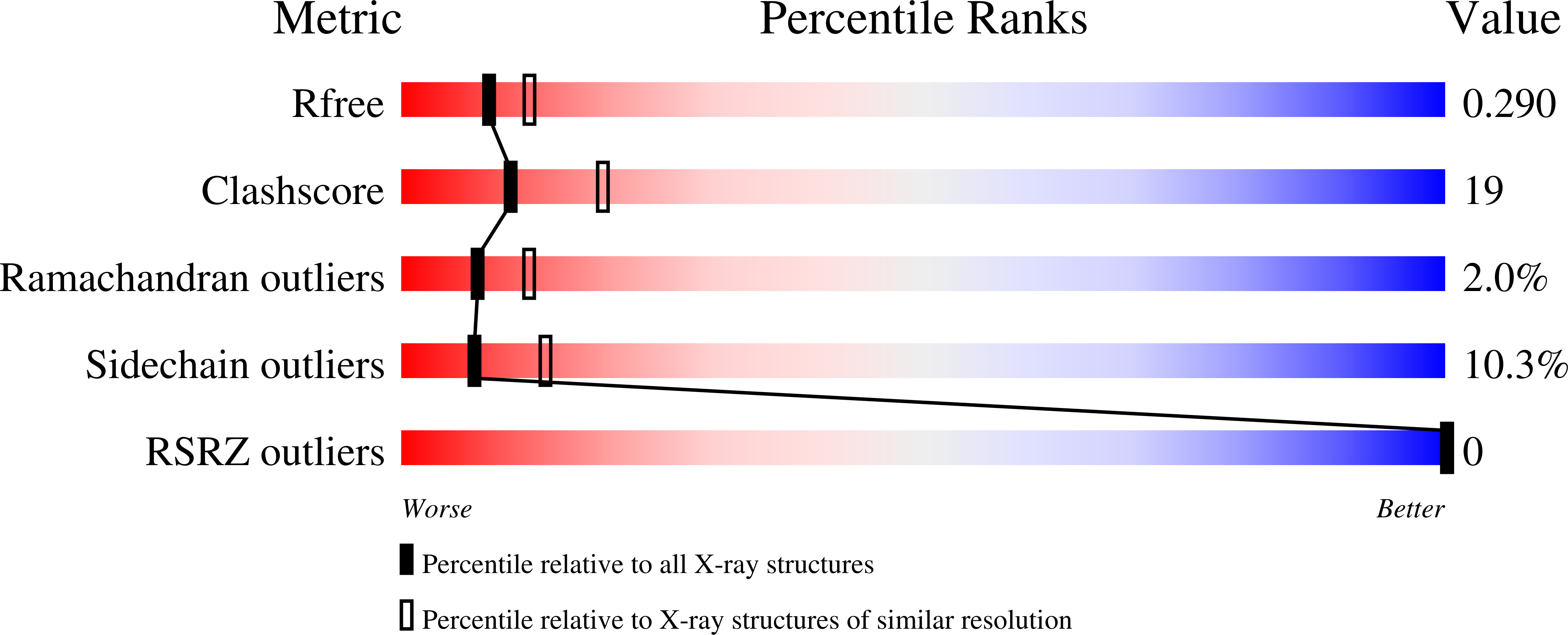Impeding the interaction between Nur77 and p38 reduces LPS-induced inflammation.
Li, L., Liu, Y., Chen, H.Z., Li, F.W., Wu, J.F., Zhang, H.K., He, J.P., Xing, Y.Z., Chen, Y., Wang, W.J., Tian, X.Y., Li, A.Z., Zhang, Q., Huang, P.Q., Han, J., Lin, T., Wu, Q.(2015) Nat Chem Biol 11: 339-346
- PubMed: 25822914
- DOI: https://doi.org/10.1038/nchembio.1788
- Primary Citation of Related Structures:
4RZE, 4RZF, 4RZG - PubMed Abstract:
Sepsis, a hyperinflammatory response that can result in multiple organ dysfunctions, is a leading cause of mortality from infection. Here, we show that orphan nuclear receptor Nur77 (also known as TR3) can enhance resistance to lipopolysaccharide (LPS)-induced sepsis in mice by inhibiting NF-κB activity and suppressing aberrant cytokine production. Nur77 directly associates with p65 to block its binding to the κB element. However, this function of Nur77 is countered by the LPS-activated p38α phosphorylation of Nur77. Dampening the interaction between Nur77 and p38α would favor Nur77 suppression of the hyperinflammatory response. A compound, n-pentyl 2-[3,5-dihydroxy-2-(1-nonanoyl) phenyl]acetate, screened from a Nur77-biased library, blocked the Nur77-p38α interaction by targeting the ligand-binding domain of Nur77 and restored the suppression of the hyperinflammatory response through Nur77 inhibition of NF-κB. This study associates the nuclear receptor with immune homeostasis and implicates a new therapeutic strategy to treat hyperinflammatory responses by targeting a p38α substrate to modulate p38α-regulated functions.
Organizational Affiliation:
State Key Laboratory of Cellular Stress Biology, Innovation Center for Cell Signaling Network, State-Province Joint Engineering Laboratory of Targeted Drugs from Natural Products, School of Life Sciences, Xiamen University, Xiamen, Fujian Province, China.















